‘RAISE AWARENESS’: SPOTTED EAGLE RAYS
Mention of rays may conjure up thoughts of the familiar southern stingrays that populate the bright shallows and colourful reefs of the Bahamas. But there are other ray species out there gracefully patrolling the coral reefs – and one of these species is the spotted eagle ray (Aetobatus narinari).
These fish (for that is what they are) are not uncommon. In fact they are found in tropical oceans worldwide (though there is a taxonomic distinction between the Atlantic version and the Pacific / Indo-Pacific ones). Note the concentration in the Caribbean sea.
Spotted eagle rays obviously have spots, but they are not notably eagle-like to look at. In fact, their snouts resemble a duck’s bill, and in some place they are less glamorously known as the duckbill ray. The ‘eagle’ part relates to the way in which they use their wings and appear to be soaring as they glide effortlessly through the water (see videos below).
Despite their global presence, these rays are categorised as ‘near-threatened’ on the IUCN Red List. Aside from vulnerability to predators including many types of shark, the rays may be caught as bycatch. In some areas they suffer entanglement in shark nets. And unsurprisingly there is a trade for them for large commercial aquariums. For the Atlantic species, Florida has taken a lead by banning fishing for, landing, buying or trading in spotted eagle rays.
10 ESSENTIAL FACTS ABOUT SPOTTED EAGLE RAYS
- They have 2 – 6 venomous barbed spines at the base of the tail
- Adults are among the largest rays, with a 10 ft wingspan
- They can leap clear of the water, and may do this more than once at a time
- Occasionally they land in boats, to the consternation of all concerned
- Their main diet is small fish and crustaceans, & sometimes octopuses
- Their broad snouts are used to dig food out of the seabed as they forage
- The rays are basically shy but may be curious of divers & snorkellers
- They suffer from parasites, both externally and in their gills
- Ray sex is quite physical, yet actual mating is brief (up to 90 secs…)
- The female hatches her eggs internally, then her ‘pups’ are born live a year later
SPOTTED EAGLE RAY PUP
WEIRD CREATURE CORNER
I have a lot of time for these cards produced by ‘Weird ‘n’ Wild Creatures’. In their unique style they are simple, educative and often give information nuggets not found elsewhere. The link is to their 4th series, Monsters of the Deep.
Photo credits: Gabrielle Manni (1), (5); Catherine & Tara Pyfrom (2); Melinda Riger / Grand Bahama Scuba (3); Lazlo-photos Wiki (4); Wiki (baby ray thumbnails); John Norton Wiki (6); Jacob Robertson Wiki (7); Weird ‘n’ Wild Creatures – card images. Videos as credited in text.


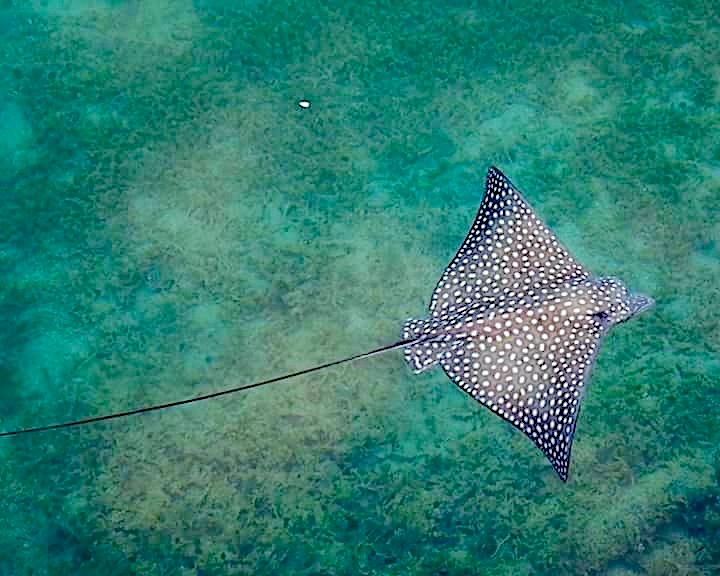
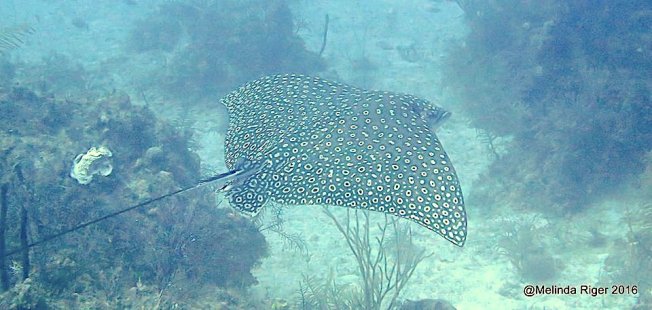
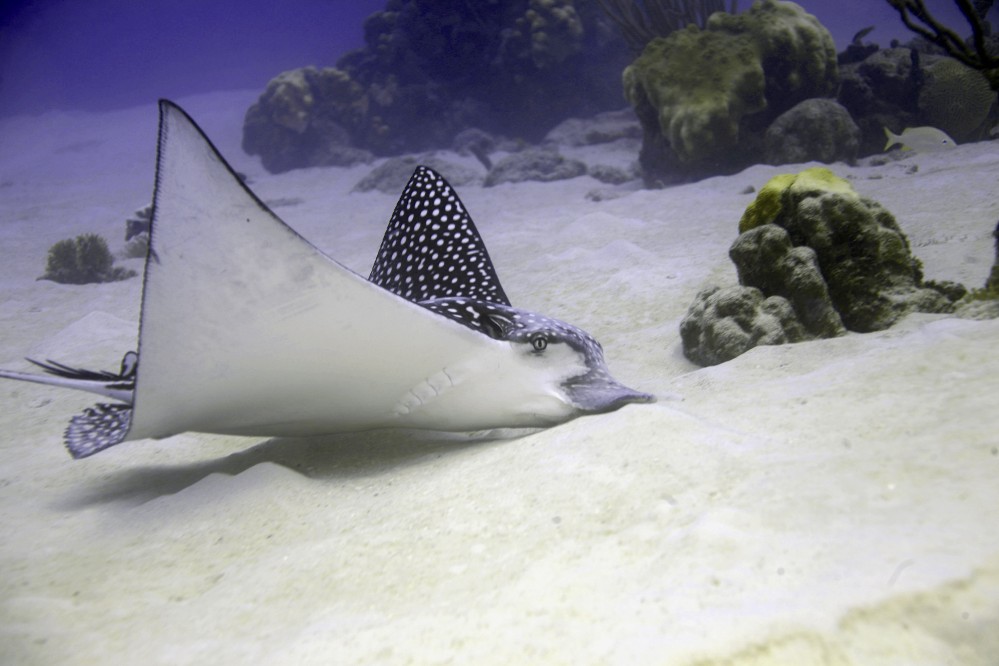

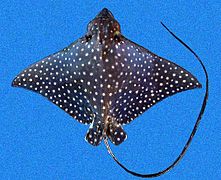
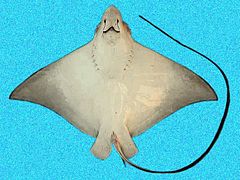

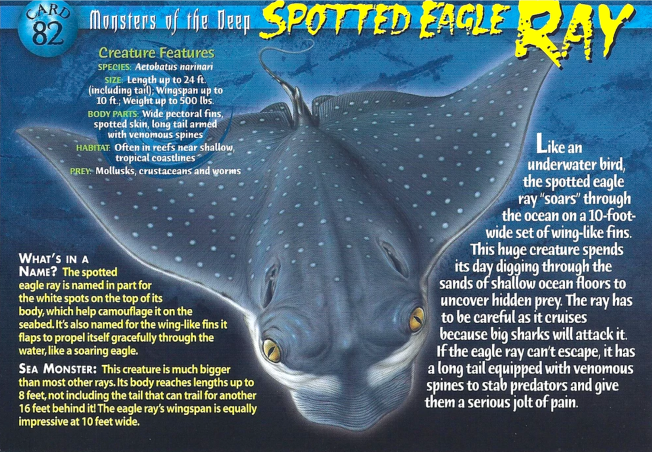
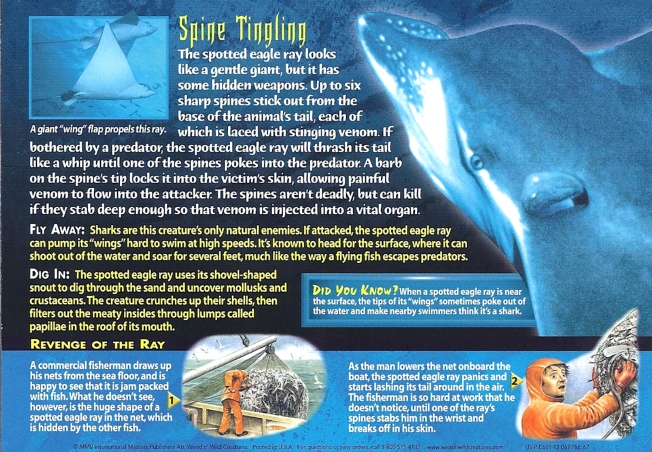

Mesmerizing!… They look so perfect and the achromatic black and white is perfect when it comes to disguise the presence of other marine anima by means of camouflage… Hidden behind and in between algae and possibly corals; I am guessing…. I love this post!!… all the best to you! 😀
LikeLike
That’s a perfect example of the perfect comment! Many thanks, appreciated! RH
LikeLiked by 1 person
What amazing creatures and such beautiful photography. It is fascinating to see how variable the markings are in different individuals, and the tail length too (or is that illusory?).
LikeLiked by 1 person
Thanks Jessica. Tail length can be up to 16 ft or so in mature adults, so you are quite right – length is variable
LikeLiked by 1 person
Beautiful rays, beautiful post. Thank you!
LikeLiked by 1 person